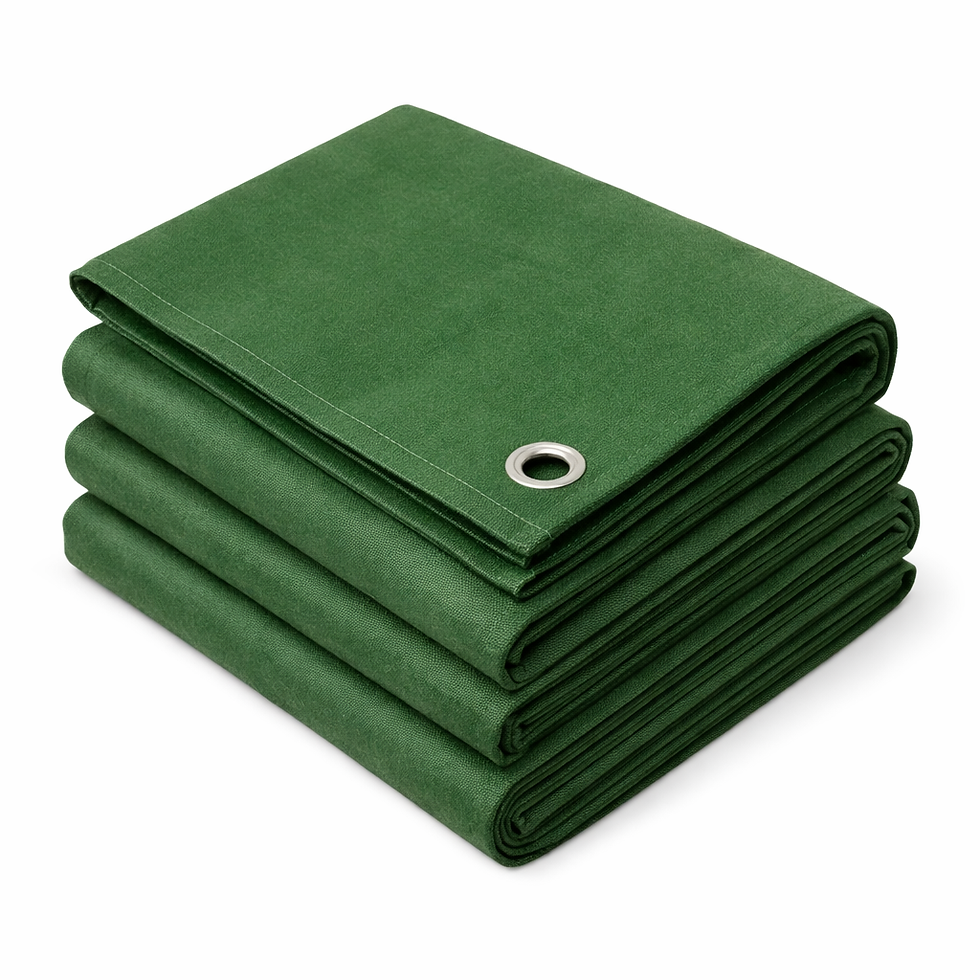The Future of Smart Tarpaulin Technology
- Bradley Tomlinson

- Jan 2
- 3 min read
As the world gets more advanced and modernization is embraced, technology has one way or made a way to enhance its features. Two main industries that have been at the forefront of these technological enhancements are the agricultural and construction industries though the usage of smart tarpaulin has been one of the greatest achievements in recent years.
When thinking about a future that is perhaps even more dependent on digital solutions, smart Tarpaulin technology will become an innovative approach to covering, protecting, and regulating resources.
What is Smart Tarpaulin Technology?
Smart tarpaulin technology can be defined as the application of sensor technology, IoT, and data analytics into tarpaulin products, which can be referred to as intelligent tarpaulin.
Such new generations of tarps have features such as the ability to sense the environmental conditions, sense any leakage or damage, and be in a position to feed the user with all the information. Smart tarpaulin technology can be applied to different sectors, including; agriculture, construction, and transport.
Advantages of Smart Tarpaulin Development
Automated Coverage And Protection: There is specifically incorporated smart technology that can effectively facilitate the tarp to be controlled by the weather. When it is raining, snowing, or windy, the tarp will automatically protect the resources placed under it.
Increased Efficiency And Productivity: Due to its real-time data and monitoring features, smart tarpaulin allows users to make reasonable and effective decisions. This results in flexibility, less time off, and better output on the line of production and production lines.
Cost Savings: New smart tarpaulin technology directly benefits customers by helping them cut costs spent on waste, damages, and inefficient resource utilization. Operational flexibility is another key feature where smart tarps could save time and cost: because the memorized settings are adapted to the current conditions, smart tarps are less likely to wear and tear and therefore, require replacement more rarely.
Enhanced Safety: By this, the smart tarps can be designed to sense and warn users of likely leakage, damage, or exposure of resources and people.
Sustainability: Overall, smart tarpaulin optimizes the utilization of resources in practices and the general use of resources for practices with a lesser impact on the environment.
Smart Tarpaulin Technology Today
As for the smart Canvas Tarpaulin technology, though it seems to be relatively fresh, many companies can already boast of developing an advanced tarp system. For instance, the Dutch company Arlanxeo has a smart tarpaulin for automatic covering, which comprises sensors and IoT platforms designed to control the tarpaulin according to the weather conditions.
Similarly, the German company REEFS adopted the idea of a smart tarpaulin system that catches moisture, wind, and temperature with sensors and shares information online.
In the agricultural field, smart tarpaulin technology has been adopted to cover crops and regulate climate conditions for soil. CropGrow, a Netherlands-based company has designed a smart tarp that creates good conditions for young plants, and pesticides are not needed.
Likewise, Sitia a French-based company has invented a smart tarp that checks the moisture of the soil and automates the use of the water to water crops hence reducing the wastage of water.
Smart Tarpaulin Technology – Outlook
Thus, with the development of technology, it will be possible to open more and more innovative applications of smart tarpaulin technology. Some potential future applications include:
Integration With Other Technologies: With this smart tarpaulin technology, other technological trends may be integrated in an efficient and intelligent way, for instance; Drones and Artificial Intelligence.
Customization: The future entails the popularization of smart tarpaulin technology, thanks to its integration with more sophisticated technologies to differentiate tarps based on certain uses, fields, and climates among many others.
Remote Monitoring And Control: In the future, as they open up internet connection for use, users can be able to act and manage their smart tarpaulin systems from a remote area at any given time with ease.
Sustainability: The application of biodegradable and ecologically intelligent tarpaulin material will potentially lower the technological adverse outcome in the future.
Increased Market Penetration: Over time and as the potential of smart tarpaulin attains more awareness then many sectors of industry will start using this kind of smart tarpaulin hence wider market coverage.
Conclusion
Smart Tarpaulin Sheet technology could be a giant leap forward in the agricultural and construction industry since it changes the way we cover, protect, and manage resources. This blog shows how smart tarpaulin technology will enable better utilization of resources, minimize wastage, and lead to higher productivity – a positive sign for the future. With this technology advancing day by day, one must wonder what other advancements are to be expected for this technology in the future.









Comments